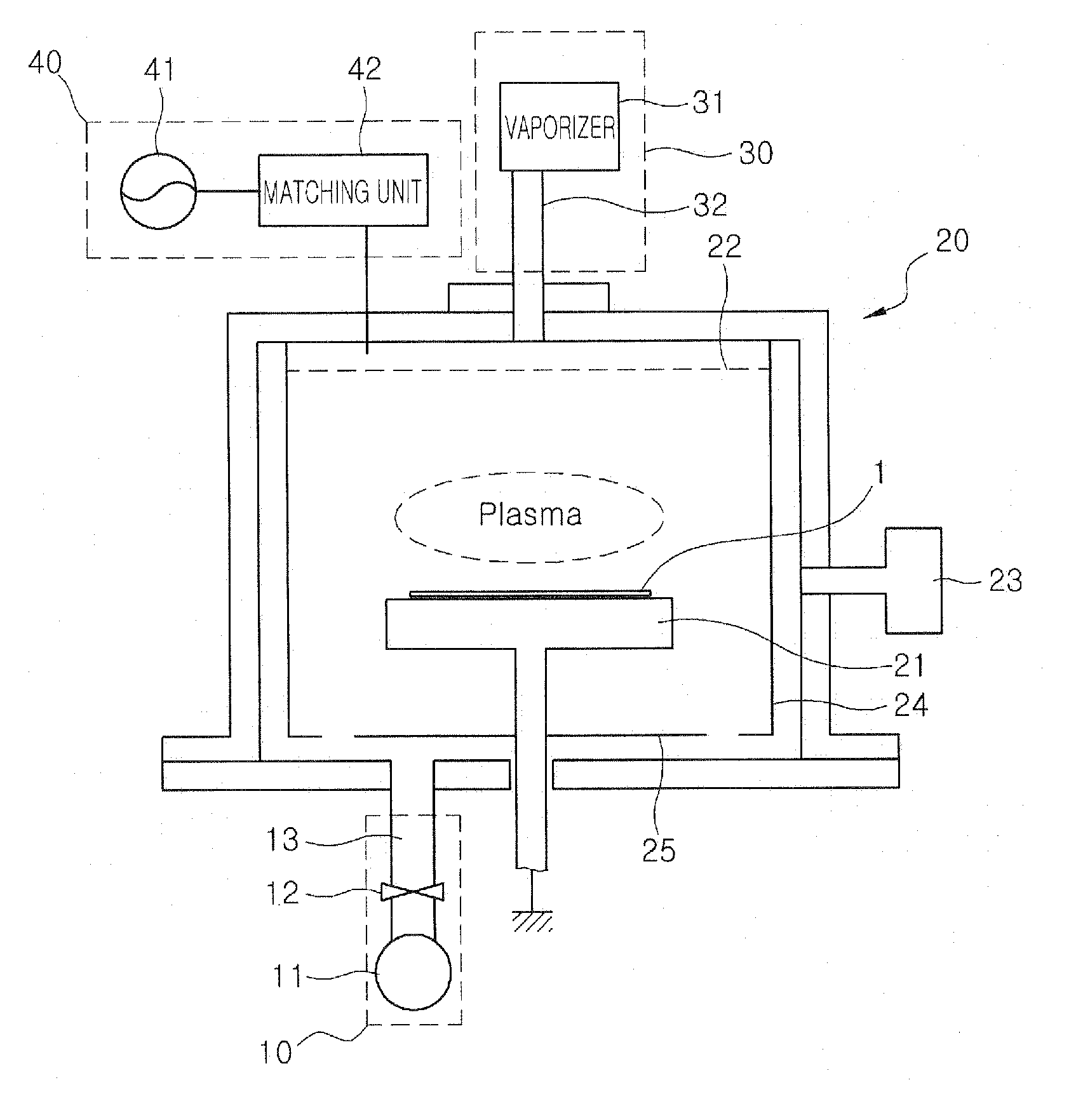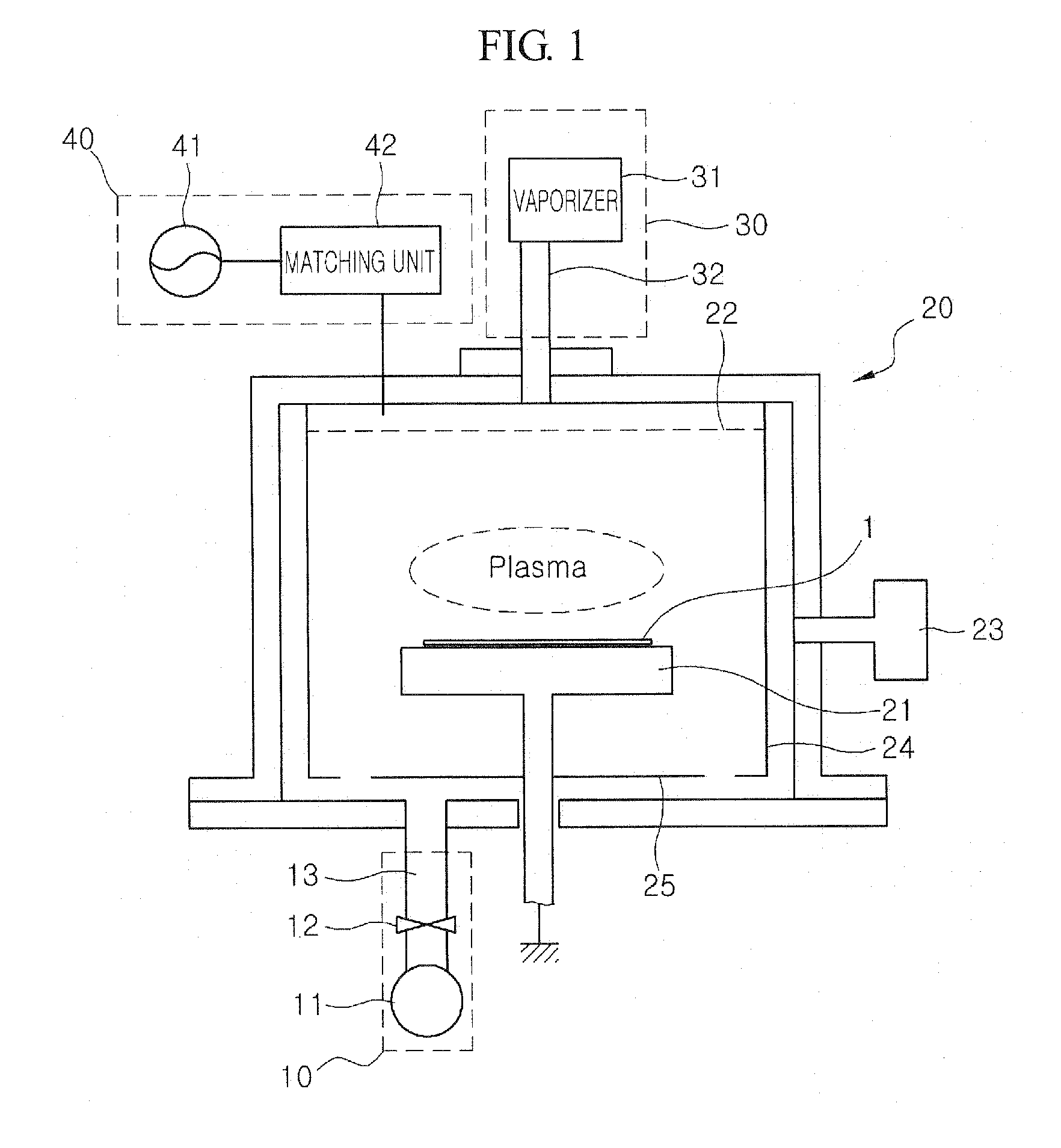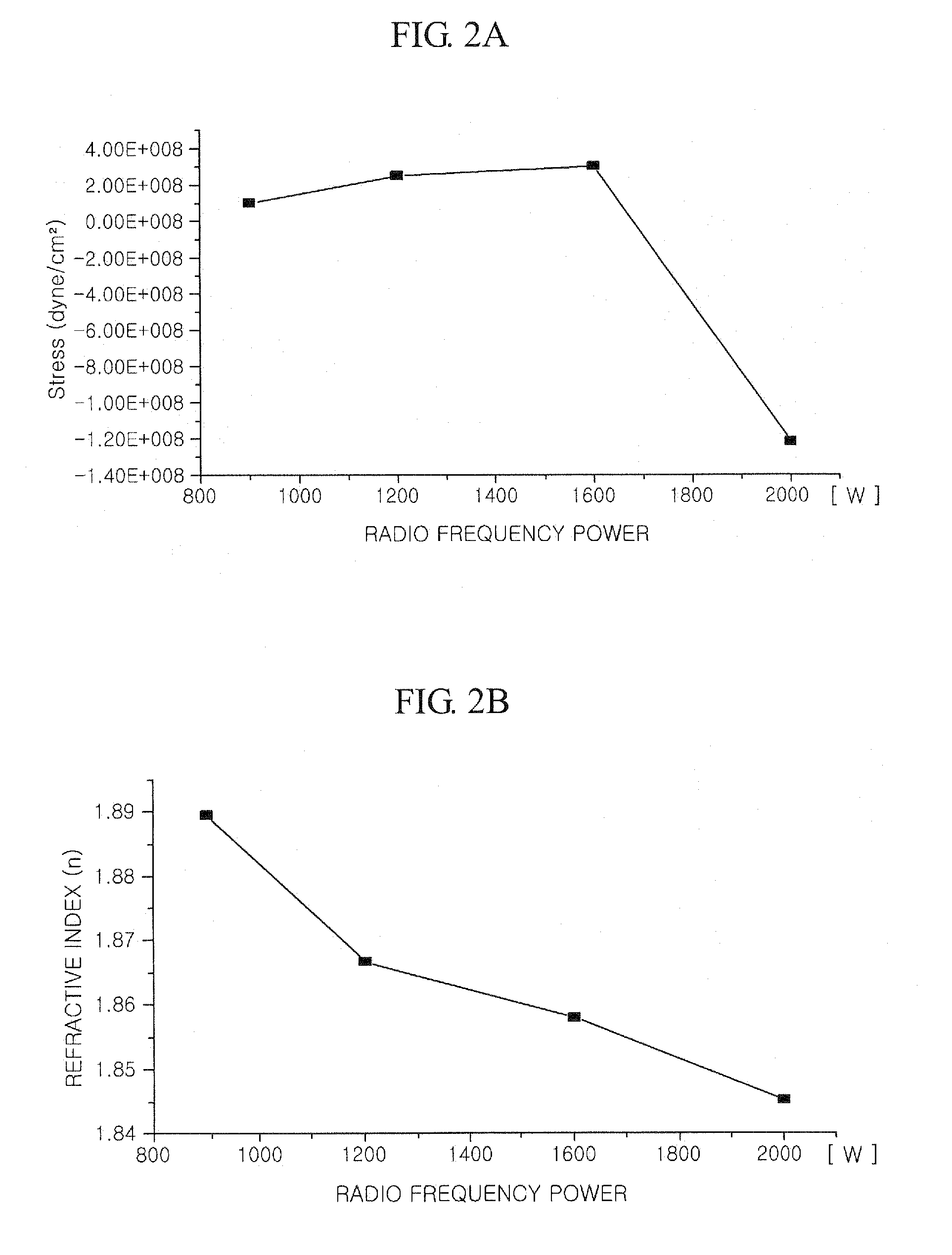Method of forming amorphous carbon film and method of manufacturing semiconductor device using the same
- Summary
- Abstract
- Description
- Claims
- Application Information
AI Technical Summary
Benefits of technology
Problems solved by technology
Method used
Image
Examples
first example
Change in Characteristics of an Amorphous Carbon Film Depending on Radio Frequency Power
[0057]In a first example of the present invention, an amorphous carbon film was formed by supplying hexene (C6H12) at a flow rate of 0.8 g / min, argon at a flow rate of 300 sccm, and helium at a flow rate of 800 sccm at a pressure of 7 Torr and temperature of 550° C. while radio frequency power is changed in a range of 900 to 2000 W. Further, a distance of 350 mils was maintained between the shower head and the substrate. FIGS. 2A to 2D illustrate changes in stress, refractive index (n), light absorption coefficient (k), and deposition rate of the amorphous carbon film, depending on radio frequency power, respectively.
[0058]FIG. 2A is a graph illustrating a change in stress of the amorphous carbon film depending on radio frequency power. Referring to FIG. 2A, as radio frequency power increases, stress slightly increases and then significantly decreases after the radio frequency power becomes 1600 ...
second example
Change in Characteristics of an Amorphous Carbon Film Depending on the Amount of Reaction Source to be Supplied
[0064]In a second example of the present invention, an amorphous carbon film was formed by supplying hexene (C6H12) at a flow rate in the range of 0.3 to 0.8 g / min, argon at a flow rate of 300 sccm, and helium at a flow rate of 200 sccm at a pressure of 7 Torr and temperature of 550° C. while the radio frequency power of 1600 W is applied. Further, a distance of 320 mils was maintained between the shower head and the substrate. In this case, FIGS. 3A to 3D illustrate changes in stress, refractive index (n), light absorption coefficient (k), and deposition rate of the amorphous carbon film, depending on the amount of reaction source to be supplied, respectively.
[0065]FIG. 3A is a graph illustrating a change in stress of the amorphous carbon film depending on the amount of reaction source to be supplied. Referring to FIG. 3A, as the amount of reaction source to be supplied in...
third example
Change in Characteristics of an Amorphous Carbon Film Depending on a Distance Between the Shower Head and the Substrate
[0071]In a third example of the present invention, an amorphous carbon film was formed by supplying hexene (C6H12) at a flow rate of 0.8 g / min, argon at a flow rate of 300 sccm, and helium at a flow rate of 800 sccm at a pressure of 7 Torr and temperature of 550° C. while radio frequency power of 1600 W is applied. Further, a distance between the shower head and the substrate was changed in the range of 250 to 350 mils. In this case, FIGS. 4A to 4D illustrate changes in stress, refractive index (n), light absorption coefficient (k), and deposition rate of the amorphous carbon film, depending on a distance between the shower head and the substrate, respectively.
[0072]FIG. 4A is a graph illustrating a change in stress of the amorphous carbon film depending on a distance between the shower head and the substrate. Referring to FIG. 3A, as the distance between the shower...
PUM
| Property | Measurement | Unit |
|---|---|---|
| Temperature | aaaaa | aaaaa |
| Pressure | aaaaa | aaaaa |
| Power | aaaaa | aaaaa |
Abstract
Description
Claims
Application Information
 Login to View More
Login to View More - R&D
- Intellectual Property
- Life Sciences
- Materials
- Tech Scout
- Unparalleled Data Quality
- Higher Quality Content
- 60% Fewer Hallucinations
Browse by: Latest US Patents, China's latest patents, Technical Efficacy Thesaurus, Application Domain, Technology Topic, Popular Technical Reports.
© 2025 PatSnap. All rights reserved.Legal|Privacy policy|Modern Slavery Act Transparency Statement|Sitemap|About US| Contact US: help@patsnap.com



